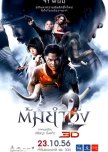
"You've lost your elephant again!?!"
Tony Jaa had to rescue his elephant little brother once again in Tom Yum Goong 2. Just as in the original, the story was a thin construct, simply there to let Jaa shine. This time he stayed in Thailand when he faced the dastardly devils who stole his elephant.Kham’s elephant is stolen (again!) by a bad guy who is working for a badder guy. When Kham arrives at his lair, the bad guy is dead and his two nieces skilled in martial arts think Kham did it. The cops have already been called to set him up so he has Sue Sue and Ping Ping (Jeeja Yanin) after him as well as the police force. Sgt. Mark, now working for Interpol, arrives on the scene. Kham ends up with what looks like the entire population of Bangkok chasing him on foot, motorcycle, and car! The Big Bad, LC, wants Kham to help him disrupt the peace process taking place in Bangkok for Kantana, a country divided. With his life and the life of his elephant on the line Kham has to find a way out or at least a way through the formidable fighters standing between him and his elephant.
The story, much like the first one, had plot holes galore. The acting was adequate. None of that was too important. Watching Tony Jaa and Jeeja Yanin fight was more than enough reason to hit play.
I’d read numerous complaints with people unhappy that Tony used wires and CGI in this film. While it was great he did amazing stunts without either in previous films, at 37, I didn’t understand what the big deal was. Jet Li, Donnie Yen, and Jackie Chan all used fighting enhancements, especially as they aged. It makes for more fantastical if not realistic fights. The wires and CGI didn’t bother me, what did was the almost indestructible nature of Kham, The Big Bad, and the #2 bad guy. In the original, Kham took people out in their vulnerable places and when people went down, they stayed down. Regardless of how they staged them there were several creative fights. The motorcycle battle and an electrically charged confrontation were quite creative. Jeeja Yanin took a backseat to Tony in the fights, but was still able to demonstrate what makes her an exciting fighter.
Tom Yum Goong 2 had a more polished look than the first film, but I missed the intense fight choreography. Unless the bad guys were zombies, I’m not sure how they kept getting up again and again. Apparently, Kham wasn’t hitting them very hard because even a hardened body is not indestructible. Kham also seemed made of impervious rubber. Having said that, I always enjoy watching Tony Jaa fight and this was no exception. Delephantly (couldn’t resist an elephant pun!) for Jaa and martial arts fans only.
3 March 2024
Was this review helpful to you?

"Who would have thought time was so important?"
Once Upon a Time in China 2 reunited Jet Li, Rosamund Kwan, and director Tsui Hark. Max Mok joined the cast as Leung Foon. This time around Wong Fei Hung had the White Lotus Cult to deal with as well as a deadly Commander all while helping Dr. Sun Yat Sen and his rebellion. And there was a secret list in true traditional kung fu film style!Whether it was led by Lo Lieh in a white wig or Xiong Xin Xin, the White Lotus Cult was always full of crazed and dangerous followers in Kung Fu Land. Based on a real sect, in this iteration, they wanted to rid China of anything remotely Western. You know they were evil because they even threw a Dalmatian dog on the bonfire for being too Western. Wong Fei Hung takes his first train ride to Canton along with 13th Aunt and Leung Foon arriving just in time for the burning and murdering. He also meets Dr. Sun Yat Sen at a medical symposium and befriends him. Along the way they rescue Chinese children who were taking foreign language classes and are on the cult’s hit list. Commander Lan appears to be all helpful and loyal but the audience knows better.
I enjoyed this film better than the first one. The story kept the action and conflict cranked but most importantly we were given two amazing fights between Jet Li and Donnie Yen. Yuen Woo Ping won the HKFA for best Fight Choreography and he earned it. He pushed Jet and Donnie and they excelled. There was wire work to be sure, but these two fast hitters were in their prime and sold every move with fists, kicks, poles, and wet towels. The fight with the cult leader relied too heavily on fantasy wire work, while entertaining, it wasn’t as good as the other two big fights.
The drawbacks for me with this film usually involved Leung Foon. His weird arousal every time he was near 13th Aunt was creepy and I didn’t find him amusing, mostly annoying. I also didn’t need to see three vomiting scenes. Because of the conflation of a cult attack, rebels with a secret list, 13th Aunt wanting WFH to notice her, a British embassy and children to protect as well as a murderous corrupt official to deal with, the story bounced around a lot and also dragged in places.
What drew me to this film and made it enjoyable were the fights between Jet Li and Donnie Yen. Without them the film would have been lackluster. It was fun to watch two kung fu movie legends go against each other in a no holds barred pole and wet towel fight.
2 March 2024
Was this review helpful to you?

"Dying is easy, surviving is hard" Getting through this movie was harder
Fist of Legend (2019) aka Legend of Chenzhen aka Fist of Legend/II was a prequel of sorts to Jet Li’s Fist of Legend from 1994. This was a cheaply and poorly made movie that would have looked out of place in 1994.Chen Zhen is in Japan as a student to learn about the enemy so that he can go home and help protect China. He falls for Mitsuko whose uncle is the virtuous president of the Black Dragon Society. Also interested in Mitsuko is the vile Black Dragon VP Chiyo Shinobu. Chiyo is in cahoots with evil military Col. Fujita. They are looking to bring down the Black Mask who has made fools of their samurai on the streets and they think it is Chen Zhen. Chen Zhen has been ordered to keep his head low which he accomplishes until Chiyo goes too far.
This movie lacked any spirit to it and was filled with problems. Chen Zhen was given zero personality. Huang Wei Ting as Mitsuko tried to double up her energy level to replace his. One of the problems with non-Japanese playing Japanese is that they don’t know how to walk in kimonos and as someone who has watched my share of Japanese movies, it comes across as awkward. Xu Shao Hang was a handsome if heartless Chiyo. There were “Americans” who looked anything but. The military uniforms appeared to be more Russian or German than US. You know a movie is desperate when it contains not one, but two sexual assaults and a repeat of one of those. The dubbing was awful, the green screens obvious, and the music played loudly over the dialogue on several occasions.
It’s a kung fu film, so maybe the fights were good. Unfortunately, most of the fights were awful and relied on quite a bit of wire work. The trained samurai were nice enough to come at Chen Zhen one at a time and not know how to swing their swords while samurai in the background just waved theirs around in the air. The fight choreography was abysmal for a 2019 production. It’s too bad because Tiger Xu moved well enough to handle better fight scenes. And story-wise, why would Chen Zhen wait until what appeared to be midday to rescue his girl after he knew she’d been kidnapped that night? Good job there hero.
Fist of Legend was populated with pretty people but lacked in everything that would make a film interesting. Even at 77 minutes it felt overly long. Plus, it might cause eye strain for all the times you'll feel like rolling your eyes at the ridiculous scenarios and terrible fight scenes. This film is just watchable, especially if you aren’t familiar with martial arts movies or have a need to watch all the movies about the fictional character Chen Zhen. There are better movies about the Black Masked warrior out there.
2 March 2024
Was this review helpful to you?

"I am through with hell"
When I heard there was a movie called Zatoichi Meets Yojimbo I could not wait to watch it! The fall was long and hard when I realized that the title was false advertising. Mifune Toshiro was in the movie playing a feckless samurai, but nothing like the cagey Yojimbo. Despite a few hints thrown out about the Kurosawa film, this samurai had a name, Sasa. I wouldn’t have been nearly as disappointed if they’d just titled it Zatoichi and the Two-Bit Samurai.Zatoichi is tired of the blood and decides to return to his hometown with the babbling brook and plum blossoms he talks about at length. It doesn’t take long before he realizes the town is under new management. Two years ago during a terrible famine, other villages heard about the town’s food reserves and attacked. The local leader hired the yakuza to come in, and just like vampires, once you invite them in you can’t get rid of them. After lots of hemming and hawing, Zatoichi decides to stay in town and begins work as the Big Bad Eboshiya’s masseuse/bodyguard. Across town Sasa has been hired by the Big Bad’s son to be his bodyguard. Sasa mostly drinks, sleeps, and cons Masagoro out of coins for strategic information. The blind swordsman and the samurai get on each other’s bad sides, more so because of the comely Umeno than whatever is going on in with the yakuza family. Long story short, everyone wants to know where some hidden gold is.
If they’d given Zatoichi and Sasa a bromance this might have been a fun movie. They couldn’t make Mifune a real bad guy because no one was going to believe Zatoichi could take him down. Bad enough they made Sasa greedy and lazy, and not as smart as Zatoichi. Again, it goes back to the title, because during the whole movie, it was impossible to not compare Sasa and Yojimbo.
The fights didn’t really start until the final third of the film. Another demerit for me. You have two of the greatest swordsmen in the land and they sit around talking and drinking? A new threat, named Kuzurya, waltzes into town with a connection to Sasa and starts eliminating people left and right. The double crosses and corruption were hip deep in the tangled plot line which was needlessly confusing. At nearly two hours with not nearly enough action, the plot became repetitive and dragged. The swordfight choreography was fairly lackluster as well, despite the high body count.
Zatoichi came to town and did his good deed, but even he was hit by gold fever. Whether Sasa or Yojimbo, the character was still played by Mifune Toshiro which gave ample opportunities that seemed to have been missed for a more exciting film. Zatoichi Meets Yojimbo had moments that were entertaining, but it could have been so much more.
1 March 2024
Was this review helpful to you?

"The worst is behind us"
Ju Dou was a disturbing story set in 1920’s China based on the novel Fuxi, Fuxi. This was the third collaboration for Zhang Yi Mou and Gong Li. The film was banned until 1992, for what reason I never did figure out. Too risqué? Infidelity? Rage against the patriarchy and sexism? Political allegory? Whatever the reason, it was still nominated for Best Foreign Language Film at the 1991 Academy Awards. Though aesthetically stunning, the story could be difficult to watch.Tian Qing arrives at his adopted uncle’s cloth dyeing operation as the only other employee is quitting. The employee basically tells Tian Qing, “You’ll be sorry!” The uncle is cheap, abusive, and has tortured two wives to death and is working on his third. The new wife, Ju Dou, was a bought and paid for laborer and potential baby maker. Her major obstacle to becoming pregnant is that her husband is not only a vicious tyrant, but infertile as well. Tian Qing has a peep hole in the barn where he watches Ju Dou bathe at night, but it turns from sexual to bitterly realistic one night when he sees her bruise covered body. Fearing she’ll be murdered soon, Ju Dou seduces Tian Qing while her husband is away. She seems to be saved when she becomes pregnant, but there is no way a story set in 1920’s China is going to allow her and Tian Qing to walk away unscathed.
As usual, Zhang Yi Mou brought out his palette and soaked the screen in vibrant hues. Dark lonely nights were bathed in indigo. Sexual arousal was accompanied by flowing bolts of crimson silk unloosed as well as the hammering of the machine. The mountains, fields and trees provided bucolic backdrops. Flames of desire, murderous heat, and the destructive combustion of inevitability licked and leapt throughout the film. Aside from the scenery and sets, Gong Li had a beauty all her own. She superbly conveyed the fear and determination of a cornered woman trying to survive and find a modicum of joy in her life. Li Bao Tian as Tian Qing was given the difficult job of bringing the slow, cowardly nephew to life. Different children played Tian Bai as he aged. Tian Bai rarely spoke, but this menacing child will send chills up your spine.
Ju Dou demonstrated the plight of a poor woman in this time frame. Ju Dou was trapped in a marriage to a merciless man and also forced to work as unpaid labor. Despite all the talk of the Yang family reputation, no one stopped Jin Shan from marrying a third wife after killing the previous two. Tian Qing was trapped working for his miserly uncle and impotent to help Ju Dou both financially and emotionally. Widows weren’t allowed to remarry and even without a blood tie, an aunt couldn’t marry a nephew. Tradition had a stranglehold on Ju Dou with almost no way for her to extricate herself.
Revenge, fatal passion, toxic patriarchy, loneliness, and a kid straight from a horror movie---Ju Dou was an intense and unrelenting film. Oh, and people dyed-more than just a pun! Yet even with Zhang Yi Mou’s technicolor designs and Gong Li’s presence there was something missing. For me, part of the problem was Tian Qing’s passiveness and also the ending took a burn it all down approach. Ju Dou was good enough that I’ve watched it twice. Whether I have the tint-rest to do it in the future remains to be seen.
"Here we are at the village Wang
So many dogs…here they come
They attack us but we can’t run, so we go home"
29 February 2024
Was this review helpful to you?
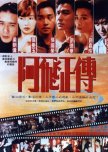
"You'll see me in your dreams tonight"
Days of Being Wild showed what lengths broken people would go to in order find the object of their desire. Time, whether it hastened by too quickly or dragged like a cement block, tethered the characters to their obsessions. Everyone had a myopic gaze of life and much of it revolved around a self-obsessed rebel.Yuddy had a habit of seducing women and then breaking their hearts. Raised by a sex worker, he desperately wanted to know who his biological mother was. Rebecca had told him his mother was a Filipino noblewoman who had paid her to raise him. Mom really put a lot of thought into that one, didn’t she? Yuddy seduced Su Li Zhen who ran a snack stand and box office by having her look at his watch for a minute. One minute before 3:00 was to be burned in their minds on that date. Their relationship flared and flamed out when Li Zhen realized he would never marry her. Before he could change the sheets on his bed, he’d seduced exotic dancer Mimi.
Women were obsessed with Yuddy---Li Zhen, Mimi, and even his adoptive mother Rebecca. And I never could figure out why. He thought only about himself and constantly told them what they could and couldn’t say. He must have been one hell of a lover to make them lose their dignity and hearts over him. Young love is often messy and impulsive with heavy doses of heartache and drama but it was hard to understand why these women found him so irresistible. How desperate for love, sex, and/or companionship they must have been. Loneliness can be a harsh mistress.
Yuddy often compared himself to a bird with no legs who had to keep flying when in reality the bird had been dead all along. The story lost steam when he left Hong Kong to find his mother in the Philippines. Without the women he seemed even more like a loser with no job, no family, and on a headlong journey to disaster.
Much of the background noise was the chiming and ticking of clocks. “I used to think a minute could pass so quickly, but actually, it can take forever,” Li Zhen told the young policeman named Tide. Later Yuddy would tell Tide, “Life really isn’t that long.” For the heartbroken, the nights took forever to pass. For a young man who made a reckless decision, it passed all too quickly and that minute would be seared in his memory.
The cast was stellar. Leslie Cheung gave Yuddy a primal movement that even the corny pickup line of, “You’ll see me in your dreams tonight” made women thirsty for him. Maggie was gorgeous but other than standing or walking around looking anguished with her hair in her eyes had little to do. Carina Lau as Mimi chewed up the scenery as the brash cabaret dancer in love with Yuddy. Andy Lau, like Maggie, was underused until the final chapter. The dark, subdued lighting and greens and golds were reminiscent of In the Mood for Love, as well as the final character revealed.
Perhaps because the actors seemed too old to be so foolhardy, I found the characters difficult to connect with and care about. The despondent mood was as dreary as the rain soaked streets the characters wandered through. Days of Being Wild was beautifully shot, lit, and composed and while mesmerizing to look at, it left me feeling empty afterward.
28 February 2024
Was this review helpful to you?

"Not yet!"
At 83, director Kurosawa Akira showed his creative drive was still going strong. However, he didn’t get his wish to die on set behind the camera on this his final film. What he did, was give us a film with a main lead who in many ways stood in for him and his desires and contemplative messages. The film might have been loosely based on Uchida Hyakken’s novel but it felt like watching Kurosawa take his final bow.In 1943 Professor Uchida greets his class and tells them that he is resigning in order to write full-time. His students are devoted to him and tell him they will continue to follow him. They help the professor when he and his wife move into a larger home which later ends up catching fire in an air raid. The couple is relegated to a small shack with a few meager possessions afterwards. The students begin work on a plan to have a better home built for the professor. To boost the professor’s morale when he regrets living the life of a beggar, they hold a birthday party for him called the Not Yet Feast on his 61st birthday. The play on words comes from the game hide and seek when children would yell, “are you ready?” and the response would often be “not yet!” or madadayo. Though provisions were few, the students and professor had a raucous time at the celebration. “Are you ready to die?” “Not yet!”
“Did that just go over their heads?”
Kurosawa’s work came across as uncharacteristically hopeful in this film. The professor was described as pure gold. Eccentric, imaginative, and a prankster, the students loved him. The students were unequivocally kind and devoted to him. Whereas most Kurosawa leads had to face grueling trials in order to have character development, the Professor came fully and nearly perfectly formed. The pessimistic and deeply flawed people were missing as well as the tumultuous inner struggles. Even the students whose names were barely mentioned were deeply kind and loyal. Unlike earlier films with biting social commentary, the historical events in Madadayo were a thin construct that had minimal impact on the characters. The hardships were briefly alluded to and overcome, unlike Kurosawa’s usual criticisms surrounding the war and post war struggles. It was if Kurosawa said, “I’ve already covered that.”
“Congratulations should be short. Eulogies should be long.”
In each of his dwellings, the Professor sat in his doorway and wrote. There were no battles or betrayals, the most tragic event in the film was when a cat went missing. This film focused on the Professor’s interior musings and the interiors of his homes and the banquet halls where the Not Yet Feasts were held. Despite his insistence on an almost hermit-like existence with signs that ranged from “The temple where guests are forbidden” to roughly translated, “Whaddya want?” the Professor was nearly always surrounded by adoring students. When the Professor needed a house, the students made it happen. When the Professor’s cat went missing, they beat the bushes to find the friendly feline. In most Kurosawa films, everyone needed to watch their backs. In Madadayo, it was the nice being nice to the nice, injected with gentle humor and wisdom.
“The flowing river never stops and the water is never the same as before. The bubbles that float in the pools, now vanishing, now forming are not of long duration.”
After I recovered from the shock of realizing that everyone in the film was affectionate and generous to each other, I settled in and enjoyed the story. Kurosawa’s film style veered closer to Ozu’s than his own. Few scenes had his three deep perspective with action going on in the foreground, middle, and background. People were often sitting in a circle on the floor talking. There was a beautifully shot seasonal montage with the small shack going through fall, winter, and spring. The characters could have used improvement. The students’ personalities were never developed and the background wife never received a name. The cat even had a name, but not the wife! No mention was made of what the German language professor wrote that was so popular.
“That will be your calling, the work you put your heart into.”
What Madadayo did give us was different generations respecting and caring for each other. Kurosawa and Uchida were both facing death unflinchingly. This was not the time for fighting, but a time of introspection and peace while also contemplating the legacy of their work. The Professor encouraged the grandchildren of his students to find their treasure and to work hard for it, much as Kurosawa had.
Despite the utter lack of conflict, I enjoyed Madadayo. Every once in a while, I need a film that envelopes me in warmth and laughter. Perhaps that’s what Kurosawa needed as well. I was pleased when I saw Kurosawa’s red glow in the last scene and beautiful, tranquil clouds appeared. Then my eyes welled with tears when I realized it would be the last time for those trademark elements. If someone had asked Kurosawa if he was ready to stop creating or studying film, I think his answer would have been, “Not yet!”
26 February 2024
Was this review helpful to you?

"What does flunked mean?"
I Flunked, But… was one of Ozu’s early silent films about university life. It was a warmhearted story demonstrating life’s ups and downs during and after university.Shomochi and his four buddies don’t take things too seriously as they cheat during exams and spend the evening before the big final exam cramming. Shomochi is the leader helping the others to study. He also prepares his white shirt as an answer guide. Nothing is ever that easy, especially when the house mom inadvertently collects the cheat sheet shirt along with the dirty clothes and gives it to the laundry services. The roommates panic at the loss. Much to everyone’s surprise the four roommates pass while Shomochi fails. The boys are sad for their friend, but Shomochi is devastated to not be able to graduate. Shomochi receives comfort from an unexpected source and finds his path toward adulthood and confidence. The four graduates discover the harsh reality of a disastrous economy where their diplomas mean very little.
Just as bachelor Ozu made numerous films about marriage and family life, he never attended university, so his take on it was more what he envisioned it to be than what he’d experienced. I enjoy Ozu's silent films, his style was more mobile. People moved naturally and looked at each other, not the camera, when they were talking. He wasn't rigid with filming from the mat and some shots were filmed from a higher position. The comedy felt organic and not forced. The boys had many humorous moments without delving completely into slapstick. I did miss his meticulously designed sets with the spare compositions. Of course, these were college boys and cluttered rooms were more realistic. An American movie poster and American university pennants decorated the walls. Ozu's teapot did receive prominent placement in one shot!
While there were many comedic moments, they alternated with sadness and discouragement. University life felt more insular. When the graduates faced the unforgiving economy, they were the ones needing help and encouragement. “Why did we have to graduate so fast?” Shomochi, on the other hand, moved toward maturity and finding joy in the moment.
This film shared the bonds formed from late night study sessions and walking arm and arm to a dance beat. Love brought encouragement in the darkest moments as did friendship. Maturity became a path adversity set them on. I Flunked, But… asked what it means to fail, and if one fails…what next? What happens when you do everything right but still can’t succeed? Ozu left some of those questions unanswered for the students who sought to find happiness amidst the sorrow and victory from failure.
25 February 2024
Was this review helpful to you?
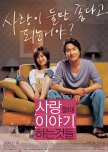
Sometime love ain't enough, and sometimes it is
Solace is a difficult movie to pigeonhole. While it is a romance, the leads spend large amounts of time apart. The pacing is slow like a slice of life and there are troubles enough for a melodrama. The leads involved occasionally find solace with each other, a gentle spot far removed from their daily grueling challenges.Somehow Lee Hye Ran has inherited her deceased father’s massive debt. I don’t understand Korean law and how it ended up with her and not her mom. Be that as it may, Hye Ran is drowning in debt and hounded by her father’s creditors. She runs a clothing shop where she often sells counterfeit clothing. Her sister is pregnant and getting married, adding to her financial concerns. Meanwhile, In Ku is a pharmacist living with his mother and mentally impaired brother, In Seob. His marriage plans fell through when the bride’s family forbade them to marry because of the brother’s condition. Neither Hye Ran nor In Ku are looking for love but fate insisted on throwing them together on several occasions. The two find comfort in each other’s company and arms, but regardless of their feelings, Hye Ran’s debt doesn't disappear and In Seob’s needs don't lessen.
Solace was a realistic look at two people for whom life could be a difficult grind. Realistically, love didn’t conquer all and solve all their problems. The film wasn’t all dreary and pessimistic. Both people were reminded of what they were missing. It instilled in them a desire to find joy in their lives whether it was listening to a familiar song or taking a hike. Speaking of music, it was a blast from another past to see a Walkman and a car with a cassette player in it. Both Hye Ran and In Ku had responsibilities they could not be released from. Opening their hearts to each other, helped them to open them to others. Sometimes love can be expressed in a myriad of ways, Solace explored love in different relationships, the joy it can bring, and the loving sacrifices people make for each other. While not a traditional romance, it was a film that stayed true to itself.
24 February 2024
Was this review helpful to you?
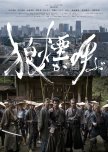
An heirloom's hidden past...
Wolf’s Calling is a stylish short film by director Toyoda Toshiaki with no dialogue. It is truly a mood piece bordering on samurai music video. This is the first film in his Resurrection trilogy followed by The Day of Destruction.A young woman discovers a rusty revolver in a box and takes it out. The memories imbued in the cold steel open up for the audience. Several samurai gather at the Mountain Resurrection Temple-Wolf. Soldiers in blue uniforms join them shouting, the only human sounds in the film. A woman’s sash and hairpin are laid out by one samurai and another carries a child’s toy implying the reasons for their solemn assembly. They silently form ranks with knowing glances. Drums echo the sounds of the approaching enemy. Weapons are drawn as well as the revolver.
An impressive cast lent weight to the performances making me wish this had been a full-length film. While the samurai might have been avenging loved ones, the real inspiration for the film had more to do with Toyoda’s arrest for possessing an illegal firearm, cleared up when it was shown that it was a family heirloom dating back to WWII. Like him, when looking at family heirlooms I wonder about the stories and people behind them.
Though Wolf’s Calling was a short film, the shots of the warriors walking through the old growth forest to the temple were resplendent. The temple was used in this film and The Day of Destruction, I have yet to watch the third film. The Young American revolver style was first made in 1905 which if they did their homework would help to date the action in the past. The music filled in for the dialogue conveying the urgency and determination of the men involved. The body language of the actors also conveyed their deadly resolve.
The film is so short that I watched it twice, enjoying it more the second time. The acting, scenery, and music gave the glimpse into the family’s past a depth that in lesser hands would have fallen flat. After watching Wolf’s Calling and The Day of Destruction which were both low budget films, I’m looking forward to trying more of his work. If you’ve never watched a silent film this might be a good gateway film.
23 February 2024
Was this review helpful to you?

"Now is the time to rage. If not now, when?"
In 2020 director Toyoda was angry. Very angry. Angry about the pandemic. Angry about the wealthy and politicians. Angry about the Olympics. And especially angry about apathy toward the hell many people were living in. The Day of Destruction fiercely and poetically screamed that rage out.“Draw your sword now. If not it ain’t rock ‘n' roll.”
Seven years ago, a pulsating globular monster appeared deep in a mine. Since then, a plague of some sort had spread. In 2020 after the epidemic took the life of Kenichi’s sister, he attempted to self-mummify at the Mountain Resurrection-Wolf temple (the same one used in Wolf's Calling) believing his sacrifice would quell the epidemic.
“What defines a human. Prove it now.”
An earthquake set loose Kenichi’s inner rage which turned him into a demon.
“Humans possessed by demons are exorcised by humans, but maybe the exorcists themselves are demons”
Priest Jiro believed that destroying the monster was a fool’s task. Nature gave them the epidemic so the monster must be led onto the right path. Kenichi must be guided onto the right path as well.
“Price tags on lives fluttering in the wind”
The wealthy and elite hid in their fortresses, safe from human misery all while planning on how to make money during the event of the year-the 2020 Olympics.
“Give me your anger. I’ll respect it.” “We have a voice. Your own voice. SHOUT!”
The people cried out their pain and fears. A bloody, red Kenichi fell down on his knees in traffic screaming his grief and outrage.
“Everyone on Earth is a central prayer…We’re all in the same boat called Generation.”
Humans are the problem. Humans are the solution. The division after division after division must be faced. Would prayer or self-sacrifice cause others to change or would the first step be the hardest? Changing oneself. Eradicating the monster might not be possible---healing, and coexisting might be.
“Would self-restraint for 100 years be enough?”
Shot on a small budget in eight days, Toyoda got the most out of the beautiful mountain scenery and the actors. I have to wonder if he received permission for the shots in the streets as ordinary masked passersbys walked around Kenichi as if a man in bloody red clothes shrieking and kneeling in the crosswalk was completely normal. The music and sound effects were not always pleasing but they were fascinating and told much of the story as there was little dialogue.
“Hey, Siri. How much longer do I have to put up with this?”
If we live in hell with demons and people acting like demons, maybe the screaming is necessary to wake ourselves up. Shake off the apathy and change. The Day of Destruction with its loud music and release of pent up fury might have been what we all needed, especially during the first year of the pandemic with people struggling in so many ways and losing people to an invisible monster. This film won’t be for everyone to be sure. It's abstract with lots of religious symbolism and can be confusing at times. For the most part, I enjoyed its poetic and manic response to a nightmare much of the world shared.
23 February 2024
Was this review helpful to you?

"Someone went ahead of you again"
Lola Igna showed that a long life isn’t always a gift when a person has to watch as her family and friends all leave her behind. Veteran Filipino actress Angie Ferro portrayed the 118-year-old Igna who was in the running for oldest grandmother in the world. Lola Igna was a message of resiliency, quiet resignation, and reconciliation shown through the life of one woman and her tattered family.Lola Igna’s great-granddaughter Nida takes the older woman to the mayor’s office where she is to receive an award for being the oldest grandmother in the Philippines. When asked what she hasn’t done that she would like to do by reporters, she tells them what she is looking forward to is death. While researching her age, the group Amazing People of the World believes she might be the oldest grandmother in the world which would come with a substantial cash prize. Nida is thrilled with this news and immediately seeks to cash in on Lola Igna’s newfound fame. On one of the tours to Igna’s house in the rice fields, her long lost great-great grandson arrives and makes his way into her life.
Director Roy depicted Lola Igna’s sparse surroundings without sliding into poverty porn. The flies, chamber pot, and simple meals didn’t come across as denigrating. Angie Ferro played Igna with dignity and a sense of humor while also hiding her sorrow at having lost family, friends, and even the man who was the first baby she ever delivered as a midwife. After some coconut wine her loneliness and her anger at God for leaving behind a person willing and ready to join her departed husband while younger people died spewed out. Yves Flores as Tim bounced into her world with his cell phone and camera and a healthy dose of respect for his great-great grandmother. He was also a reminder to everyone of his mother who left years before and never returned.
Lola Igna was a glimpse into the heartache people feel when they’ve attended too many wakes. The last sibling, the last child, the one who outlived those who were born after her was a terrible burden. Death is part of life, and Igna was ready to join her beloved unafraid of what lie ahead. While her final destination was delayed, Igna also gave freely of herself to her family and community. There were those who benefited financially from the centenarian yet the movie overwhelming showed the community’s and family’s loving generosity which led to heartfelt reconciliations. No life is free from sorrow but Lola Igna showed that it could be faced with grace and when necessary, a full chamber pot.
22 February 2024
Was this review helpful to you?
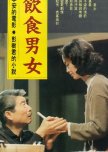
"Eat, drink, man, woman, food and sex-basic human desires"
Eat Drink Man Woman is a film by Ang Lee that I’ve watched before and wanted to revisit. I liked it even better this time than I did the first, maybe it is an acquired taste. Food, family, love, loss, and secrets made for a tasty feast to sit down to.Mr. Chu is a widowed chef who has lost his sense of taste. He has three daughters who live with him. Each lives their lives separately except for when they sit down to the elaborate Sunday meals he prepares. One by one they face challenges, and find new love or new paths to take.
The food preparation was sumptuous. Chicken, pork, fish, a variety of seafood, hot pot, all made not only to taste with the mouth but with the eyes as well. No one would have to cook for a week with the Sunday dinners the father served. The daughters didn’t eat that much and there were enormous quantities of food leftover. Much of the food was also shared with the eldest daughter’s divorced friend and child. Mr. Chu would also pack culinary delights for the child to take to school for her lunches making her very popular with her classmates. The middle daughter loved to cook like her father, but had been banished from the restaurant kitchen so that she would find a proper job. While she excelled at her position with an airline, her passion was making the dishes she’d seen her father so thoughtfully prepare.
Everyone cared about the other yet had lost the capacity to communicate freely. Only when things began to be shaken up and the status quo was flipped over and scattered did father and daughters begin to reach out again. Sometimes a pot can be simmering quietly on the stove and is only noticed when it boils over. The dish isn’t ruined if someone attends to it lovingly. Everyone in the Chu family had to discover what made them happy, what helped them be who they wanted to be. Sometimes that exploration led to loss before it led to gain. If you enjoy watching elaborate meals being prepared as well as father-daughter, and sisterly relationships being explored, this quirky family drama is seasoned to near perfection.
21 February 2024
Was this review helpful to you?

"Keep your enemies closer"
Knight Flower was a funny, entertaining cross between a female Robin Hood and Zorro. The story may not have had any surprises, but in this genre as in most. execution is key and Knight Flower kept the action moving and the long boring monologues by the villains to a minimum.Yeo Hwa never even met her husband who was killed on the way to the wedding and has been a cloistered widow for 15 long years. Stuck in the family shrine most days, never being able to set foot outside of her in-laws’ property she only has her maid Yeon Seon for company as she waits on her older brother to finally return and take her with him. What no one in the household knows except for Seon is that at night Yeo Hwa dresses in black and helps the helpless with her money and martial arts. Everything is going smoothly until she runs into the new Capital Defense officer, Park Su Ho. With lots of push and pull between the upright lawman and the vigilante, as well as the requisite romantic tension, the two find they have much in common as well as common enemies.
The first episode felt slow to me, but it picked up the pace as it went along and never slowed down again until the last episode. Given the prison-like existence of the widows and pressure to commit suicide for the family honor, it was a whimsical release to have the heroine running over rooftops and rescuing the male lead on occasion. Of course, only women were held to these standards. Widowers were free to go about and even encouraged to remarry. Repression reconfigured to look like honor.
I enjoyed the story, but stumbled some with the casting, or perhaps the writing. Full disclosure, I enjoy a good noona romance so that wasn't an issue . Nor do I have a problem with an older woman being an action hero, much older men do it all the time. Lee Ha Nee is a beautiful woman but at 40 she did not look 32 nor very athletic. Her character was someone skilled with living a double life for years, but Yeo Hwa could not manage a poker face when needed. Yeo Hwa was quick to act but often slow to catch on to the bad guys’ plans. Lee Jong Won looked like a sweet puppy who adored Yeo Hwa, but added little depth to his character. A quick glance at the cast list and it was easy to pick out who the baddies were going to be. When one used his kind grandpa voice instead of putting a character at ease, chills should have been running down their back. And Jo Jae Yoon can always be counted on to chew up the scenery maniacally.
Knight Flower, aside from bringing up the appalling way widows were treated, was for the most part a romantic action comedy. While there were some fights, they weren’t bloody or deadly. Most of the deaths occurred 15 years prior to the current story. The one murder in the present story actually felt quite deserved. So, if you like your historical dramas light and funny, with a little romance and a little action, this might be a good fit.
21 February 2024
Was this review helpful to you?
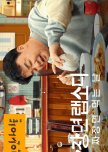
Grab a snack because this show will make you hungry!
Chinese Korean Food might have been a more accurate title than Jjajangmyeon Rhapsody. The two-episode food show with Baek Jong Won not only talked about the spicy black bean noodle dish but also other foods brought over with Chinese immigrants and adapted to Korean tastes.The first episode focused on Jjajangmyeon-how it evolved and became one of the most popular dishes in Korea. A celebratory dish at first, it’s now delivered to pool halls, offices, farm fields, and even boats. Six million bowls of the gooey black delight are sold in Korea every day. If the noodles were lined up end to end they would circle the globe 1 ½ times daily. Originally, a cheap food Chinese laborers cooked it slowly turned into the dish it is today. Chinese “places” as they were called in the 1960’s after a law was passed preventing the Chinese from buying real estate and businesses were quite popular and about the only foreign food available. When the economy accelerated in the 1980’s, Chinese restaurants took advantage of delivery service to expand their clientele.
Baek and other guests showed tips on how to enhance the eating experience. The main rule was to not be embarrassed about your face getting messy from the dark sauce. Different varieties and techniques were explored as well as how to spot an authentic Chinese restaurant. Brief historical moments that influenced where the Chinese settled were also thrown in.
Episode 2 covered Jjamppong. Apparently, one of the great dilemmas in a Chinese restaurant is whether to order Jjajangmyeon or Jjamppong. The evolution of Jjamppong from a mild dish to the torridly hot, “adult” dish was explored. Jjajangmyeon has relatively fewer variations whereas Jjamppong has endless varieties. Foodies take Jjamppong food tours, and new takes on the popular dish and hangover cure are created all the time. Two men have tried 500 Jjamppong places in eight years!
Episode 2 also covered Yaki Udon, Mandu (Korean dumplings), Tangsuyuk (Sweet and sour) and fried rice. Some Chinese immigrants came voluntary, others were voluntold by the Japanese when they occupied the peninsula and needed more laborers at the ports to load up the Korean rice on ships bound for Japan and its army. After the Korean war, Americans shipped large amounts of wheat to Korea which they put to good use in making tasty noodles.
I wish they’d given more credit to the hard-working Chinese immigrants who faced discrimination personally and legally and found a way to succeed. Just as they did in the United States, the Chinese often began restaurants and adapted their food for their new home. The documentary made it seem as if the Koreans’ tastes caused the dishes to be delicious instead of the originators of the food working to make them more palatable for their customers.
I enjoyed watching how different chefs created variations of Jjajangmyeon and Jjamppong, pouring their love and creativity into the popular noodle meals. Jjajangmyeon is a dish that brings happiness as well as satiation and that joy was infectious. If you enjoy food shows, this is one to give a try. Just don’t forget to have a snack nearby.
18 February 2024
Was this review helpful to you?

 31
31 98
98 7
7





















